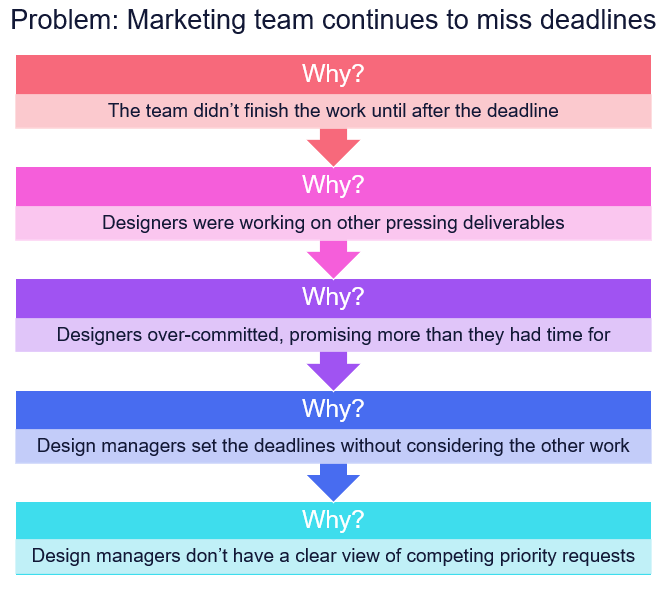Imagine it’s your first day at a new company and someone from the human resource department asks where you'd like to sit. Would you choose right next to your boss?
When I first started working at my current company, Smarsh, I was placed at a desk right outside a Sr. Vice President’s office (yay!). He could see me through his window without turning his head and felt watched at all times.
I wondered what he would think if he saw me sending a message on my cell phone or taking a personal call. What if I wasn’t back from lunch by 1 pm? What if I left before him? It felt like my personal life had no place in this professional environment and that the pressure to stop being a human being was high.
I assumed these factors would affect the judgment of my work and, even worse, that this type of thing mattered. I was afraid that if I did something wrong or missed a deadline my boss would think that I didn’t know how to manage my time, wasn’t able to do the work, or simply didn’t care about my productivity rate.
When that dreadful incident arrived, and I let something slip through the cracks while addressing a pressing family issue, I expected to be reprimanded and assumed my manager would lose confidence in my work. Lucky for me, that didn’t happen.
Instead, when we talked about the work that was missed, he didn’t jump to conclusions and instead had an empathetic approach. He asked me how I was doing both personally and professionally. I explained a few of my ongoing stressors that impacted my productivity and he showed genuine compassion and understood. We talked about next steps to finish the work and he offered support for my personal stressors.
Through his seeking to understand what was going on with me, rather than only the work, I learned the value of empathetic leadership and not assuming you know everything that’s going on with your people.
Being led with empathy changed my world. Experiencing empathetic leadership boosted my engagement in my role, leading to promotions and for me to adopt it into my leadership style.
I’ve been leading teams at Smarsh for five years now and over that time we’ve grown from a 200-person company to an almost 1,000 person organization spanning more than five countries.
Growth at this rate is messy, difficult, and, at times, tiresome. However, with some thoughtfulness and a lot of empathy, we have created an environment where our people (we call them Smarshians) trust each other, communicate openly, feel like they can have honest conversations, and are continuously engaged with the project.
Humblebrag: my engagement survey scores in management have been 100% for the last 5 years.
If you want to build an engaged organization through empathy and empathetic leadership, this article will help you get started.
Related Read: Ready For 2024? Here Are 3 Tips To Help You Stand Out As A Leader
What Is Empathetic Leadership?
Empathetic leadership means approaching leadership with a seek-to-understand mindset and being aware of the unique feelings and thoughts of others as you lead. Enhancing this leadership approach can be achieved with employee engagement systems, which aide understanding employees' unique feelings and thoughts with surveys.
In practice, this means not assuming you know everything that is going on, approaching problems of leadership with curiosity, and assuming positive intent until proven otherwise.
As with my experience at Smarsh, practicing empathetic leadership means not jumping to a conclusion that someone did or didn’t do something on purpose. Maybe they didn’t realize how their comment came off, or how missing a deadline due to other priorities impacted their team.
Empathetic leadership asks us to quiet the voice in our head that might try to explain why things are the way they are in an exceptionally crazy way—typically this voice is wrong and you may create an even bigger mess if trying to prove or disprove your theory. If you don’t know, seek to understand.
Engaging employees with empathetic leadership is good for them, good for you, and good for the business. Do you want to work in an environment where everyone is valued for their contributions, feedback is shared with care, and teams work collaboratively towards collective goals? If yes, then you need empathetic leadership guiding the team.
Empathetic leadership directly impacts your people, product, business and customers. Practicing empathetic leadership:
- Mitigates: wellbeing issues, selfishness, assumptions, blaming, gossip, lower levels of success and negative customer experiences
- Promotes: health, purpose, belonging, motivation, happiness, trust, teamwork, accountability, delivering better outcomes and creating happier customers
Practicing empathetic leadership means approaching challenges with empathy and curiosity. Trying to get to the root of a problem before making a causation determination.
To quote Jack Altman, CEO of Lattice, “Empathy means being people-centric... this is your competitive advantage”.
How Do You Become an Empathetic Leader?
The most critical relationship in a workplace is that between an employee and their manager. As a manager, you are the most crucial influence on an employee’s engagement in their work—your relationship with every employee matters.
Many leaders understand the basics of empathy, but being able to apply empathy to leadership and lead people in practice is an advanced skill.
The practice of empathy, integral to formulating effective performance review phrases, requires a deep contextualization of performance and behavior, challenging us to see beyond the evident.
Having an empathetic leadership style requires proactively asking lots of questions (keep reading for examples) and looking for information to help place yourself in your direct reports’ shoes.
Building relationships with your employees that enable you to lead with empathy is a big step towards creating a positive, trusting relationship with your people. Trust builds over time, and developing empathy skills, and leading with empathy can accelerate the rate at which trust is earned.
The good news is that empathetic leadership is one of the easiest things you can do to improve the engagement of your employees. It's also one of the cheapest, too.
I learned by leading my teams and observing the positive and negative impacts of managers on people and Smarsh. The below steps have helped me to engage employees and avoid many of the missteps, misunderstandings, and misinterpretations that come with work—especially during a swift shift to working remotely and navigating seas of uncertainty.
Related Read: How To Support New Managers With A People Partner Program
Put On Your Own Oxygen Mask First
To properly support and empathize with your team members, be sure to take care of yourself first. Just like on an airplane when you put on your oxygen mask before assisting others, be sure you are in a good mindset to engage with your people fully. Take care of your whole self—mind, body, and spirit.
Are you not feeling yourself today? Log off, don’t try to push through just because you think you have to. Allow yourself (and your team) to take sad, tired, and “I just need a day” days. It's better for everyone. Once you are balanced and in the right mindset to lead with empathy, it’s time to engage. Please don’t push it.
Checkingin.co is a useful app to keep track of your and your team member's mental health
Connect Regularly With Your People
Make connecting directly with your employees a key priority. You are their leader after all, shouldn’t you make time to meet with them? 35.3% of employees report their manager meets with them at least once a month. That’s the bare minimum.

Don’t be part of the 12.2% of employees that report their managers rarely meet with them 1:1...how could you ever feel engaged with someone who doesn’t even take time to talk to you? (Emplify, 2020).
In a recent talk at Resources for Humans Virtual HR Conference, Adam Grant, an organizational psychologist, shared a comment from a study participant, “It's part of my manager’s job, to know how I’m doing emotionally.”
If you are not having 1:1s, it's exceptionally difficult to meet this expectation of your people. 1:1s are essential to connecting with your people, knowing them personally and keeping tabs on how they are doing overtime.
On my teams, each person who reports to me has 30-minutes set aside each week to connect 1:1. That time is for the employee. We can talk about whatever they like, but it should not be a simple update across projects or work items. Learn more about how to have effective 1:1s.
Related: How To Build A True Employee-First Company
Listen Deeply
Once you’re ready to practice empathetic leadership, the first step is listening to your employees, REALLY listening to them.
In a recent survey, 64% of workers say they’re considering resigning from their jobs, citing the “lack of being heard” as a key driver. Don’t be part of this statistic. Close your chat, email and Netflix windows and put your person up on the big screen!
Pay attention to their words, tone of voice and body language to get the complete picture and best opportunity for real understanding. Listen to understand, not to respond. If someone brings you a serious question or message, match their tone and energy and take it seriously.
Pauses or dead air time are OK! Use that time to think about what you understood in the message and craft a response that puts the employee first.
When Faced With An Issue, Don’t Assume
Has anyone moved a meeting on you with little notice and no explanation? Have you received a read receipt on a chat message but not gotten a response? What did you assume was the cause? Were you right?
In most cases, the stories we tell ourselves about the cause of changes or behaviors are extreme and usually wrong. We can do better.
When faced with an issue, an odd request or behavior that doesn’t seem like the norm, employ the 5-Whys technique to get to the root of the problem.

Start by asking why the problem happened, then using the answer, ask why that was the case, then why and why again until you reach a point where you don’t know the answer to the “why” question. That’s the thing you need to dig on.
In most cases, you will be surprised about what is actually going on or is the root of the problem. Once you know what’s causing the pain, that’s the moment when you can get to solving it with empathy. Need help getting started? Try this worksheet from the University of Houston-Clear Lake.
Related Read: 10 Best HR Case Management Software To Manage Issues & Risks [2023]
Deliver Empathetic Interactions
Anytime you are faced with an issue, especially those involving people, employ the 5-Whys technique either by yourself or with others. Once you understand the root cause of the issue, begin preparing an empathy-focused interaction to address the issue.
Have a conversation with yourself and cross-check your planned response against the following empathy-focused questions:
- Could there be something I missed? How do I know?
- What might I not know about, are other forces at play?
- What might they be feeling? Is there fear involved? What are they afraid of?
- How impactful is this issue in the long-term? Why is that the case?
- What can I do to help? What other help could we seek together?
Once you have cross-checked your planned response against these questions, approach the issue in a conscientious manner, making sure to look for any clues of the current situation in tone of voice and body language.
Then, deliver your message in a thoughtful, caring way while challenging directly as needed.
The best empathetic leaders care deeply for their employees and challenge them directly when needed, exercising empathy-focused Radical Candor.
Let’s Get Started
Let’s start with empathy and build from there.
Jack Altman, CEO & Founder of Lattice
Getting started is the hardest part of making a behavioral change, but I am confident you can do it.
Start by ensuring you’re ready to begin, then connect with your employees 1:1 to learn about their experiences, lives, and work. Listen deeply. The next time an issue arises, consider what you might not know about that could be influencing it. Approach the resolution and any surrounding conversations with empathy.
Have you experienced a leader using empathy or empathetic leadership in your work? How did it feel? Have you tried any of these empathy-focused tactics? Share what made the most significant impact in the comments!
For further listening/reading on the subject check out the People Managing People podcast "How trust and empathy build strong companies" with Victor Tram from Monos.
Also worth checking out:


